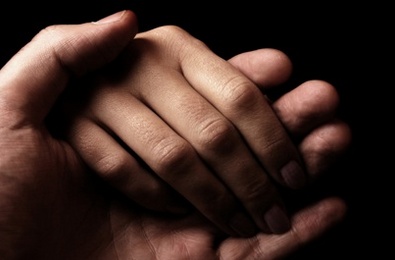When we are born into our families, we are essentially given a template for attachment. We learn that our needs will be met consistently and lovingly, thus creating secure attachment. Or, we learn that attachment is inconsistent and unreliable, creating insecure attachment patterns. We bring this template with us throughout our lives, particularly in our intimate relationships. Regardless of the romantic nature of our young adult/adult relationships, we bring in and play out our familial attachment patterns.
For those who were given the template of insecurity, relationships can be a source of pain, opening up old wounds. Because you bring this template with you, you can assign yourself with the role of “bad,” “unlovable,” “unworthy,” and so on. Your karmic fate seems to be to play out all of your childhood pain and live from the model your parents set.
While this can feel overwhelming, you are invited at any time in your life to bring consciousness to the table. Once that is there, anything is possible. The first steps of conscious attachment are to develop an awareness of the dynamics of your family of origin, admitting, and accepting that you were impacted by it all. The next step is to let go of the judgment that clouds your ability to love yourself.
When generational patterns appear, our tendency is to judge and get swallowed up in them. Thich Nhat Hanh suggests that instead, we greet our habit energy with friendliness. When our mother’s anxiety or our father’s reactivity shows up in us, we can say, “Hi, Mom!” “Hi, Dad!” and distinguish between who we are and the energy that sometimes passes through us. We can ask why the habit energy is there and learn from it. We don’t have to identify as those habit patterns. We can make different choices. In order for this to be effective, it must become a practice.
We can begin building new habits by practicing new coping styles daily. We create more secure bonds of attachment by allowing ourselves to stay vulnerable. Vulnerability begins with ourselves–we stay ever willing to admit to ourselves our struggles, pains, and fears. We stay open to ourselves by leaning into our feelings and offering up all the nurturing that we need. Attending therapy, support groups, meditating, reading, staying active, etc. are all important components of deep healing, and keep us accountable to ourselves. Once this practice of personal vulnerability becomes more natural, we are more confident and better able to attach in security with others.
Who we choose to partner with is crucial to our sense of security. A question to ask yourself as you partner with someone is: are my needs being met? Knowing what your basic interpersonal needs are will help you gauge how stable or long term your relationship will last. Basic needs include honest communication, trust, validation, healthy coping rather than addictive coping styles, and an interpersonal work ethic.
Until we become conscious of our attachment templates, much of our intimate life can feel like a trance–we can’t help but do what we learned as children. As adults, we have the thrilling privilege of waking up into awareness and choosing something new for ourselves: the bonds of safe attachment.



